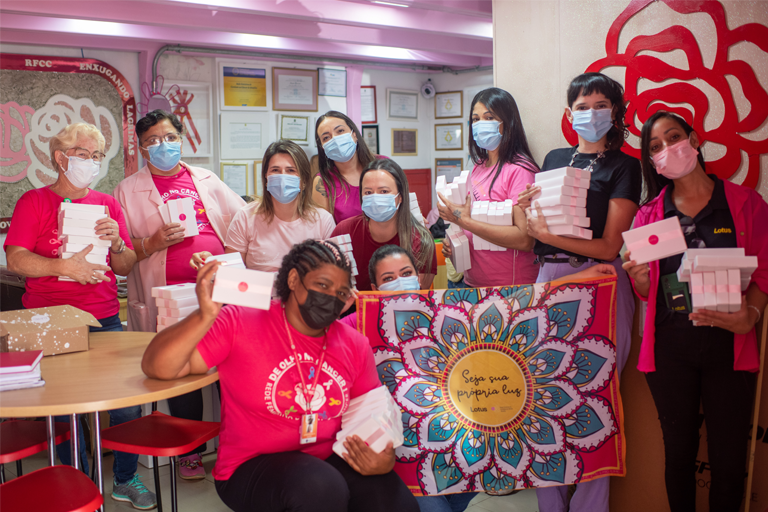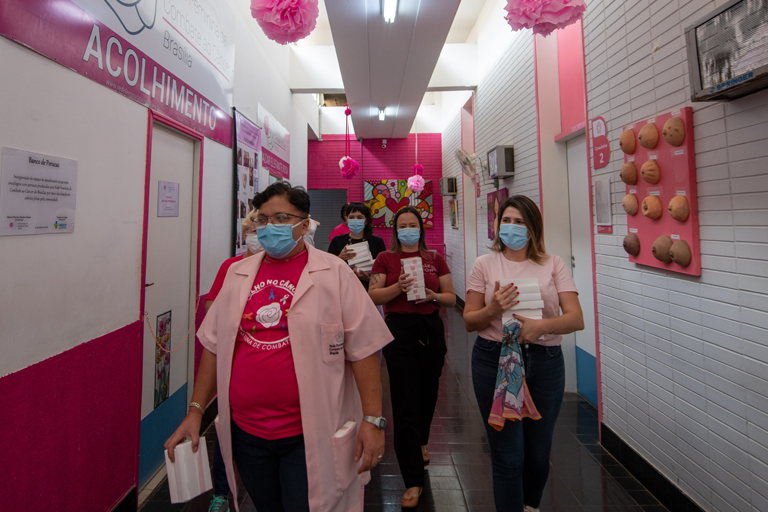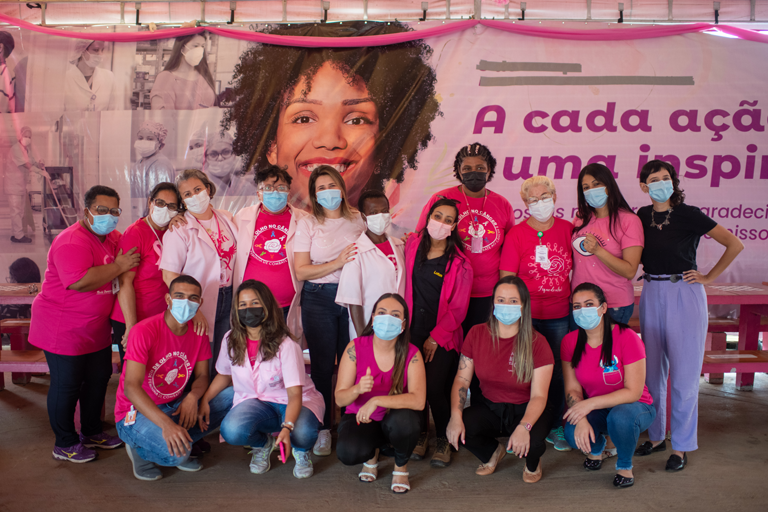During the month marked by actions to fight the type of cancer that kills the most women worldwide — breast cancer — Lotus donated 300 scarves to patients battling the disease and also hosted a lunch for employees and collaborators focused on self-care and prevention.

In partnership with “Lumas,” a Brazilian brand that highlights female empowerment, Lotus donated 300 personalized scarves made from special fabrics to the Women’s Network for Cancer Support (Rede Feminina de Combate ao Câncer) in Brasília. In addition to providing support, the goal was to reinforce the importance of preventive exams and honor the fight of women against breast cancer.
Also in tribute to Breast Cancer Awareness Month, Lotus organized a luncheon for employees and collaborators with a focus on preventive self-care. “Female strength goes far beyond. These women are true warriors who deserve all attention and care. With the donation of the scarves, in addition to offering support, Lotus also aims to raise awareness about the disease and its prevention, as it can be cured and lives can be saved if detected early,” says Luiz Felipe Hernandez, co-founder of Lotus. “This initiative is one of Lotus’s trademarks! We have hundreds of female employees, and they are an example to us. So may these scarves be of great use and bring comfort to the women who continue bravely fighting breast cancer,” adds Ruy Hernandez, co-founder of Lotus.
According to Brazil’s Ministry of Health, just last year, breast cancer claimed nearly 50 lives per day in the country. In total, there were 18,200 deaths in 2021, and over the past 25 years, 323,000 Brazilians have lost their lives to the disease. These alarming numbers demand attention. That’s why it’s critical to understand that, when detected early, doctors and specialists confirm the breast cancer cure rate can reach 95%. Hence the importance of raising awareness about early diagnosis.

PINK OCTOBER:
Created in the early 1990s, “Pink October” is an international awareness movement for the early detection of breast cancer. The symbol of prevention — the pink ribbon — was launched by the Susan G. Komen for the Cure Foundation and distributed to participants in the first Race for the Cure, held in New York (USA), and has since been promoted annually.
The period is celebrated in Brazil and around the world with the goal of sharing information and raising awareness in order to help reduce the incidence and mortality rates of the disease.
The objective of Pink October 2022 is to disseminate information about breast cancer and to strengthen the Brazilian Ministry of Health’s recommendations for prevention, early diagnosis, and screening of the disease.

Breast Cancer
Breast cancer is the most common type affecting women worldwide, both in developing and developed countries. Around 2.3 million new cases were estimated for 2020 globally, representing approximately 24.5% of all cancers diagnosed in women. Incidence rates vary across regions, with the highest rates in developed countries.
In Brazil, an estimated 66,280 new cases of breast cancer were projected for 2021, with an estimated risk of 61.61 cases per 100,000 women.
Breast cancer is also the leading cause of cancer-related death among women in Brazil, with an age-adjusted mortality rate (based on the world population) of 14.23 per 100,000 in 2019. The highest incidence and mortality rates are found in the South and Southeast regions of Brazil.
Main warning signs and symptoms of breast cancer include:
A lump (nodule), usually hard, fixed, and painless; red or orange-peel-like skin on the breast; changes in the nipple; and spontaneous discharge from one nipple. Small nodules may also appear in the neck or underarm (axillary) area.
Risk Factors
There is no single cause of breast cancer. Multiple factors are associated with its development in women, including aging, reproductive life factors, family history, alcohol consumption, excess weight, insufficient physical activity, and exposure to ionizing radiation.
Main Risk Factors:
Behavioral/Environmental:
- Obesity and overweight, especially after menopause
- Insufficient physical activity (less than 150 minutes of moderate activity per week)
- Alcohol consumption
- Frequent exposure to ionizing radiation (X-rays, CT scans, mammography, etc.)
- Previous chest radiotherapy treatment
Reproductive/Hormonal Factors:
- First menstruation (menarche) before age 12
- Not having children
- First pregnancy after age 30
- Menopause after age 55
- Use of hormonal contraceptives (estrogen-progestin)
- Hormone replacement therapy (estrogen-progestin), especially for more than five years
Hereditary/Genetic:
- Family history of ovarian cancer; breast cancer in women, particularly before age 50; or male breast cancer
- Genetic mutations, especially in the BRCA1 and BRCA2 genes. Women with these mutations have a higher risk of developing breast cancer.
Source: National Cancer Institute (INCA)


